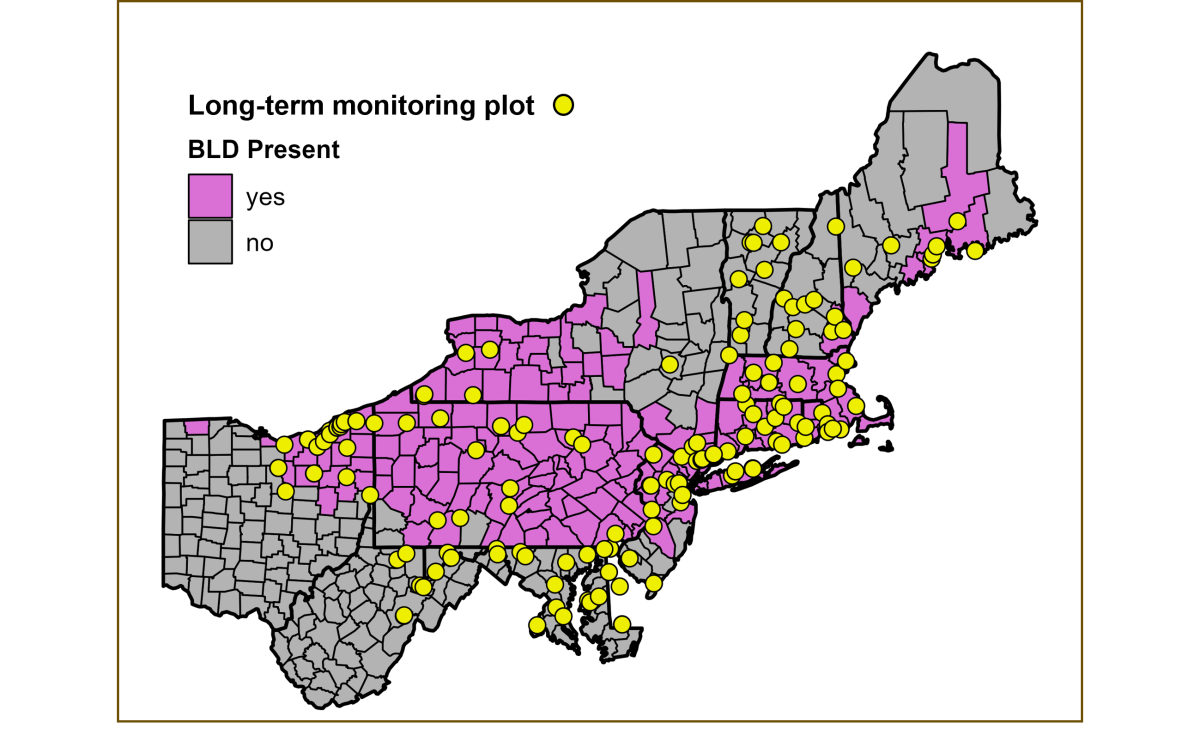Beech leaf disease (BLD) is a new and emerging forest threat, first observed in the United States in 2012 in Ohio. Since then, the disease has spread east and to the north and south and now can be found across New England. BLD symptoms have been observed in native American beech trees—as well as European and Oriental beech—of all different sizes and ages, with symptoms appearing as dark banded areas between veins of infected leaves, while higher severity infections produce stunted leaves that are crinkled and leathery in texture. The nematodes overwinter in dormant buds and can cause spring leaves to abort or, where leaves are produced, causes malformation, reduced photosynthetic capacity, and early senescence in mature leaves.
Some chemical treatment methods for BLD are showing promise, but these are generally not feasible for use at a forest scale. In untreated, heavily infested stands can exhibit sapling mortality within 2-5 years of infection. Adult trees are likewise impacted, though decline is typically more gradual before succumbing to the disease.
